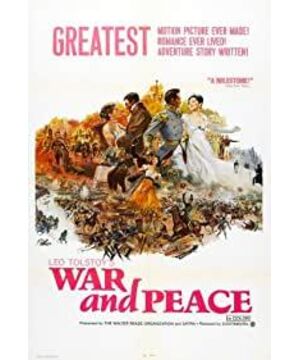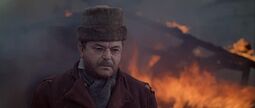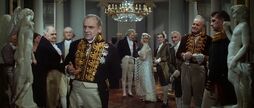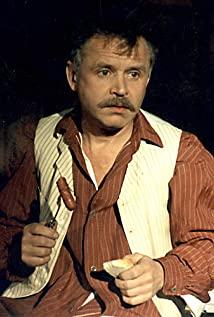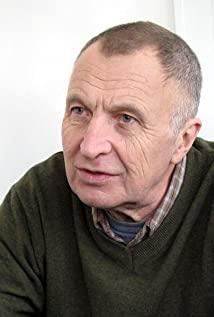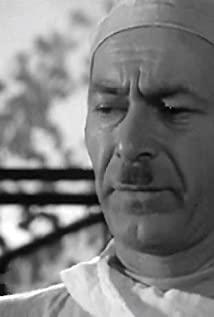Most expensive movie ever
If someone asks you, which is the most expensive movie in movie history? Some might say 2019's Avengers: Infinity War ($365 million to shoot, $150 million to announce, $515 million in total).
If inflation is considered, Cleopatra (1963, cost $44 million) is also mentioned, which is equivalent to $5.2 billion today.
But the most expensive film and television is a non-Hollywood giant, and almost no latecomers can catch up. That was the 1966 Soviet edition of War and Peace.
War and Peace is a 1966-67 Soviet war drama, co-written and directed by Sergei Bondarchuk, based on Leo Tolstoy's 1869 masterpiece War and Peace . Released in four installments in 1966 and 1967, the film starred Bondarchuk as Pierre, Vyacheslav Tikhonov as Prince Andrey, and Lyudmila Saverieva Plays Natasha.
Regarding the cost of the film, referring to Wikipedia, the New York Times reported that it was "the most expensive film ever made... The Russians said it cost $100 million"; in 1979 Guinness World Records also announced a similar figure, saying " War and Peace was "the most expensive movie ever made" because "officially it cost more than $96 million in total".
Filming "War and Peace", the total length of film used for filming alone is 1540 kilometers. A total of 595,193 cast members participated in the filming, including 36 important roles and 599 roles with dialogue. There are 20,900 sets of clothing, of which 47 factories provide ordinary clothing for the film, and two factories produce harnesses and leather goods. 58 museums provide a variety of paintings, furniture, chandeliers, tableware, guns and other daily necessities of the 19th century, which completely reproduce the life style of the nobles at that time. In addition to the museum, thousands of Soviets sent the crew private treasures from their home collections.
At that time, the Soviet Union prepared 695 cannons of the French Napoleonic era and 587 cannons of the Tsarist period, 20 of which were dragged from the museum. More than 30 planes, 40 tons of fuel, 52 tons of gunpowder, 23 tons of gunpowder, 16,600 grenades, 6,600 smoke bombs, and 4,500 fuses were prepared for aerial photography.
In order to capture the real scene, the Soviet Union spent two years building a fake Moscow covering an area of 100,000 square meters in a place 150 kilometers northeast of Moscow, including city streets, residences, government agencies, cultural facilities and even a complete The Kremlin is a unique set in the history of world cinema. In the end, in order to photograph the Moscow fire, a torch actually set the whole "Moscow" on fire...
When filming the war scene of Napoleon's invasion of Russia, the military even tried to make the number of troops in the film as close to the actual battle as possible. A total of 125,000 actors and 35,000 war horses were used, and each "soldier" had his own weapons and uniforms. This number was equal to the number of people on the front lines of Napoleon's battle that year. Enter the Guinness Book of World Records.
Since the filming of "War and Peace" was an extremely important political task for the Soviet Union at that time, many government agencies and the military participated for free, but the actual cost was far more than that!
Therefore, the most expensive film in film history, the former Soviet version of "War and Peace" is well-deserved!
Why make this movie?
In the 1950s and 1960s, American Hollywood was keen to shoot epic movies, and successively produced such giants as "Ben-Hur" (1959), "Cleopatra" (1963). "War and Peace" (1956), shot in the United States, was the reason for the filming of the former Soviet version of "War and Peace".
The American version of "War and Peace" was released in 1956, directed by Kim Victor, starring Henry Fonda and Audrey Hepburn. After its release, it swept the entire American box office, and then attracted more than 31.4 million when it was released in the Soviet Union. Audiences go to the theater to watch. The fact that so many Soviet people went to see a Russian classic filmed by an American quickly attracted the attention of the top leaders of the CPSU and instructed the Film Bureau and the Moscow Film Studio to fight back against it.
At that time, the United States and the Soviet Union were fighting for hegemony. There were not only political struggles, military checks and balances, but even cultural struggles. The Soviet version of War and Peace can be said to be a product of the Cold War era. In today's terms, it is a public opinion war and a cultural invasion.
Although culture knows no borders, the treasures of Russian literature were photographed by Americans, and in turn became popular in the Soviet Union. It can be said that it is quite a shame for Soviet film workers. And as far as the movie itself is concerned, "War and Peace" filmed in the United States did not express Toweng's reflection on war and portrayal of human nature very well, but a kitsch love story.
Therefore, in addition to making movies that are more in line with their own literary masterpieces, the Soviet Union has to say no to American-style cultural looting and invasion!
Unprecedented film history
Tolstoy's War and Peace was written in 1863-1869 and took six years. Coincidentally, the Soviet director Bondarchuk also spent six years filming "War and Peace", and even suffered two heart attacks during the filming. Fortunately, all the effort was worth it.
Like the novel, the film is divided into four parts with a total of seven hours, reaching the extreme in exhaustion of details and pursuit of truth. From the luxurious and extravagant upper-class ball, to the bloody battlefield of Borodino; from the snow and wind in the Russian winter, to the Moscow fire and the overwhelming ashes, every scene is very grand. The scene is magnificent and majestic, which perfectly integrates the spirit of Tolstoy's original works, and reproduces the vast historical picture of Russia during the Russo-French War.
Compared with the American version, the Soviet version is truly "magnificent and epic". Unlike the American version, which focuses on love stories, the Soviet version is a real war scene. And the characterization is also very good, perfectly restoring the style of Russian society at that time, as well as the improvement process of the individual's self-personality in the war.
The artistic level has reached its peak, and it has also been very successful at the box office. Taking Japan as an example, it was officially released in 1969, and it was extremely sensational, and it was difficult to get a ticket. In the end, the total box office in Japan was as high as 250 million US dollars (at the time). Later, Japan re-released the Soviet version of "War and Peace" in 1971, and the box office Still hot.
In 1969, the Soviet version of War and Peace won the Academy Award for Best Foreign Language Film. This can be said to be a victory of Soviet culture over American culture during the Cold War; it can also be said to be a tribute to Soviet films by the American film industry.
The success of the Soviet version of "War and Peace" is due to the strength of the entire Soviet Union, reflecting the characteristics of "concentrating efforts to do major things" under the socialist system. The actual cost behind it is difficult to consider with specific values. This is a great work completed in a specific historical context at that time, and now or in the future, it is difficult to see such a film again.
This should be a gift from the Soviet Union to the film industry, and it is also an insurmountable peak.
View more about War and Peace reviews


